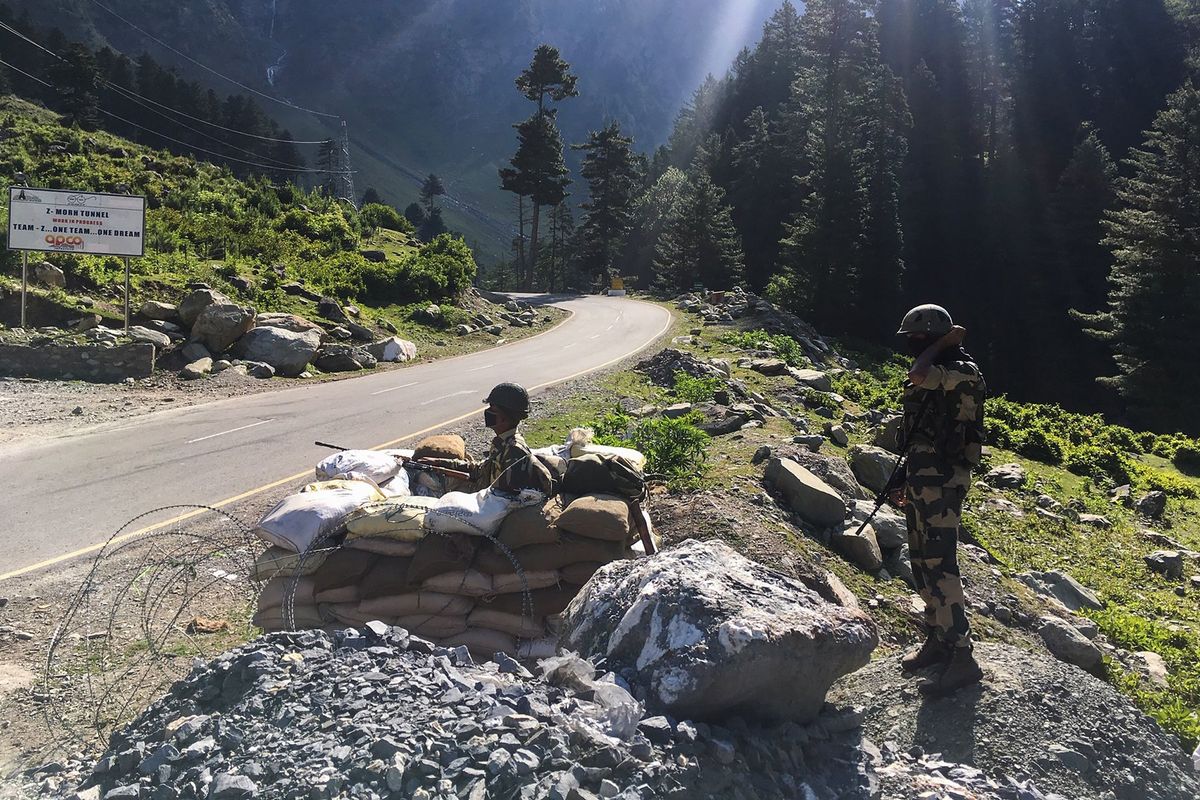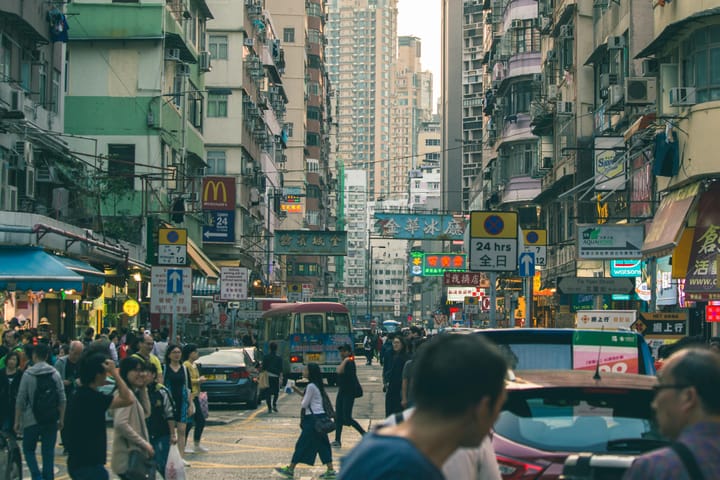India and China’s geopolitical conflict is bad news for Huawei

A few minutes every morning is all you need.
Stay up to date on the world's Headlines and Human Stories. It's fun, it's factual, it's fluff-free.
On August 31, news broke that a further deadly confrontation between Indian and Chinese soldiers along a disputed border in the Himalayas had been narrowly averted, making clear that the geopolitical conflict between India and China is unlikely to go away any time soon.
The border dispute between India and China is reflected in the growing economic and technological war playing out between the two countries. In the immediate aftermath of the border conflict, India’s government announced that it was banning the popular Chinese-owned social media app TikTok, as well as many others.
The Indian government gave a similar rationale for the banning as the Trump administration has done in the United States – namely, that TikTok poses a national security threat and could potentially transmit user data back to the Chinese government.
Chinese telecoms giant Huawei now also faces the prospect of being shut out of India and losing access to its vast market. As a result, the very future of Huawei appears to be in peril as a result of an otherwise unrelated border dispute high in the Himalayas.
Why Huawei needs India
According to Vivekanand Subbaraman, analyst at Ambit Capital in Mumbai, the fate of the telecoms services giant Huawei is now “hanging in the balance” and the chance of “the good old days when Huawei played a very big role in the Indian network” returning are essentially nil.
As the world’s second-largest mobile phone market, with an estimated 850 million users, India has long played an important part in Huawei’s global business.
Not only does Huawei possess the highest market share of 5G services globally, with a 35.7% share of the global 5G infrastructure market, but it commands a respectable 24% share of the Indian telecoms equipment market, according to Counterpoint Research, a market research firm.
Huawei has also signed big contracts with Indian wireless service providers in the past, such as Bharti Airtel, Vodafone and the state-owned BSNL, to build and upgrade 4G infrastructure and networks.
Huawei executives themselves were also expecting to play a large role in helping India transition to the next generation of cellular networks and wireless connectivity. In a 2019 event in India, then chief executive of Huawei, Jay Chen, claimed that “Huawei will play a very active role in the India 5G journey.”
Chen stated that his “perception is the Indian government shows their full confidence and support in Huawei.”
Huawei has traditionally been deeply involved in providing India’s 4G infrastructure and does not have any viable Indian competitors in this department. The company’s international competitors, such as Nokia and Ericsson, are also on average 30% more expensive than Huawei.
Unofficial banning
Huawei is not the only Chinese company to face increasing pressure from India and its allies in recent months.
In the aftermath of the border conflict, ByteDance’s popular social media app TikTok was banned from Indian markets, alongside another 100 or so Chinese-made apps, with the Indian government citing familiar concerns regarding security and privacy, particularly of user data.
According to reports, Huawei – alongside another Chinese telecom provider, ZTE – now faces an unofficial ban in India that would exclude them from future 5G rollout plans in the country.
According to Sanchit Vir Gogia, chief analyst at Greyhound Research, although “India’s government is yet to issue an official diktat against Huawei,” its message has been clear – “that of not being welcoming to Huawei” and rejecting its future in India indefinitely.
This ban also comes as Huawei faces pressure around the world. In the US, the Trump administration recently placed Huawei on the Treasury Department’s “Entity List," restricting the sale of crucial microchip technology to the Chinese tech giant without a license.
Some analysts called the decision by the US a “death sentence.”
Future in peril
The decision to unofficially cut Huawei off from the world’s second-largest mobile phone market has implications for all parties involved and is a sign of how much relations between India and China have deteriorated.
Even prior to the news of Huawei’s unofficial banning, the company had reportedly cut revenue targets and jobs in India.
But freezing Huawei out of India is unlikely to result in an Indian competitor taking over its operations, at least not immediately.
Although parallels can be drawn to the banning of TikTok and other Chinese apps in India, which allowed Indian competitors to skyrocket in the aftermath, the circumstances in this case are different.
Huawei has traditionally acted as a supplier of telecoms infrastructure for three of India’s biggest mobile operators in recent years, including Bharti Airtel, Vodafone Idea and BSNL. These three companies between them share a 67.58% share of the Indian mobile operator market.
According to Neil Shah, a telecoms industry analyst at Counterpoint Research, all three operators are willing to reduce their reliance on Huawei, whatever the cost. In some cases, Shah argues, the Chinese giant is “almost shut out,” while at the very best its future is in “limbo.”
But these Indian companies themselves will have difficulty rolling out their own 5G infrastructure. Vodafone Idea is struggling with net debt of Indian Rs 1.16 lakh crore (around US$13 billion) and its business is suffering after the meteoric rise of Jio Platforms.
Jio Platforms, India’s newest but most successful mobile operator, may attempt to fill the gap left by a banished Huawei. It has secured tens of billions in investment since the beginning of this year, has connections to the Modi government and the backing of India’s biggest company in Reliance Industries and has already made clear its ambitions to roll out 5G infrastructure and not make use of any Chinese equipment.
But Jio is still reliant on components from other suppliers and has yet to prove whether it can successfully build its own 5G infrastructure, let alone a whole network, that will be able to compete with its proven competitors in the European and Asian markets, including Ericsson, Nokia and Samsung.
Indian consumers face significant delays in the rollout of 5G in the country, which may prove more expensive than what Huawei would have offered. For politicians and citizens increasingly wary of China amid rising anti-Chinese sentiment in the country, this may prove a price worth paying in the short-term.
Have a tip or story? Get in touch with our reporters at tips@themilsource.com




Comments ()